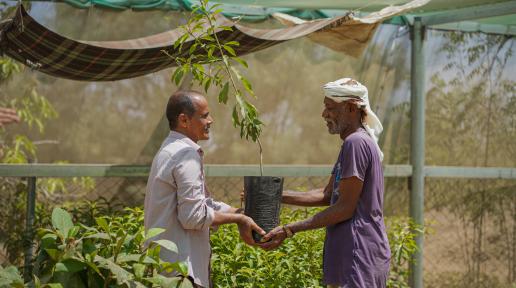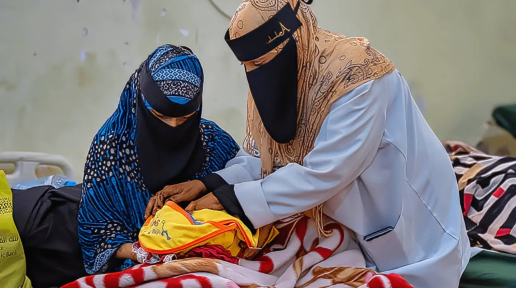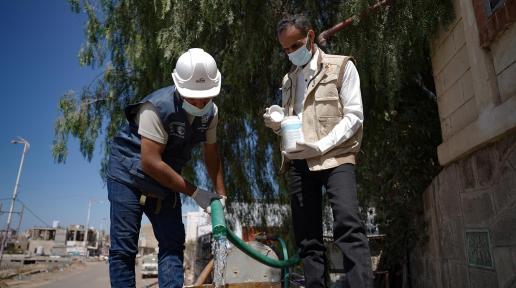Story
06 November 2025
UNFPA Yemen: Rapid Response Mechanism: Yemen’s emergency lifeline under threat
In August, torrential rains and violent windstorms tore through communities across Yemen, exacerbating the impacts of a decade of man-made and economic crises. For families already living on the edge, the latest climate shocks brought immediate, devastating loss.In the Al-Dhahi village of Raymah governorate, 46-year-old Husna—a widow, mother, and sole provider—watched on in horror as the storm stole their last piece of security. "When the roof fell, everything we had was gone. We were left with nothing." she recalled. The collapse of her single-room home not only destroyed their few possessions, but instantly plunged Husna and her three young daughters into destitution. Although neighbours offered Husna and her family temporary shelter, she insisted on staying close to the remains of her home that first night. “It was all we had left,” she explained softly. “I couldn’t bear to leave it.”Weathering the storm: Climate shocks hit the most vulnerableSince the loss of her husband four years ago, Husna has shouldered the responsibility of providing for her family by collecting and selling charcoal for a meager, unreliable income. She belongs to the rising tide of Yemeni women leading displaced households—a quarter of all displaced families are now headed by women, a staggering jump from just 9 percent before the 2015 conflict escalation. In Sana'a Governorate, 45-year-old Younes and his family had already been ripped from their home by the long crisis. They eventually settled in Al-Suweida Camp, where life was unforgiving for his children: worn-out tents, no electricity, and no schools. When heavy rains struck in August 2025, the floodwaters ruined their tent and soaked their few remaining possessions, forcing the family to huddle together in the cold and rain.The Rapid Response Mechanism: A critical first line of defenceRelief arrived for Husna and Younes through the Rapid Response Mechanism (RRM), a crucial first line of defence led by UNFPA, the United Nations Population Fund, in coordination with WFP and UNICEF, funded by ECHO, the European Union Humanitarian Aid. The RRM provides immediate, life-saving assistance to people displaced by conflict or climate disasters, including ready-to-eat food, basic hygiene items, and women’s dignity kits, while also triggering referrals and multipurpose cash assistance where feasible–all within 48 to 72 hours. “The food gave us strength after days without eating,” Husna said. “The soap and water filter meant I could finally protect my daughters from sickness. It was like breathing again after suffocating.” Younes also shared his relief when he received food, hygiene items and clothes, knowing his children could finally sleep peacefully after days of suffering.Under Threat: Funding shortfall endangers a lifelineSince 2018, the RRM has assisted nearly five million people, with over 300,000 supported in 2025 alone as climate shocks drive more than 80 per cent of all new displacements in Yemen. Crucially, the data collected when people receive RRM kits is leveraged to guide subsequent food, sanitation, and shelter responses, directly ensuring efficiency and impact.This life-saving aid, however, is now under threat. As of October 2025, the RRM has only received 9 per cent of the $16.6 million needed to operate in 2025. The current funding gap jeopardizes the ability to deploy teams at full capacity within the critical 72-hour window and replenish buffer stocks.“Investing in this mechanism ensures life-saving aid—including dignity kits, hygiene supplies, and food—reaches displaced men, women, and children within the critical 72-hour window, preserving the dignity and survival of Yemen's most vulnerable,” said Mr. Mustafa Elkanzi, UNFPA’s Acting Representative in Yemen. “The consequences of inaction are dire: without immediate support, the hard-won progress of years will be undone, abandoning those most in need to even greater peril.”UNFPA and its partners urge the international community to urgently scale up flexible, timely, and predictable funding to close the critical resource gap for the RRM.













